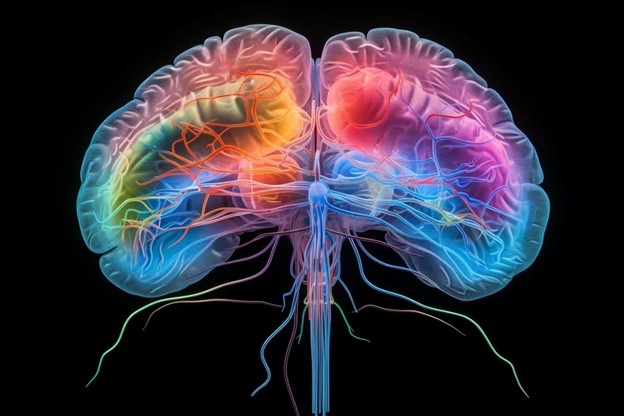
AI gadgets have become integral to our daily lives, particularly in the realm of smart home assistants. These devices streamline morning routines efficiently by automating tasks that would otherwise take up valuable time. For instance, smart home assistants can brew your coffee, adjust your thermostat, and even provide you with a weather update, all while you are still getting out of bed. This level of automation ensures that your morning starts smoothly and efficiently, setting a positive tone for the rest of the day.
In addition to streamlining morning routines, AI gadgets optimize home energy usage. By learning your schedule and preferences, these devices can adjust lighting, heating, and cooling systems to operate only when needed, thus saving energy and reducing utility bills. For example, smart thermostats can lower the temperature when you leave for work and raise it again just before you return home, ensuring comfort without unnecessary energy expenditure. This not only contributes to a more sustainable lifestyle but also offers significant financial savings over time.
Wearable AI Devices for Health Monitoring

Wearable AI devices have revolutionized health monitoring by tracking vital signs for proactive health management. These gadgets can monitor heart rate, blood pressure, and even oxygen levels, providing real-time data that can be crucial for early detection of health issues. For example, smartwatches equipped with AI can alert you to irregular heartbeats, prompting you to seek medical advice before a minor issue turns into a major health concern. This proactive approach to health management can lead to better outcomes and a higher quality of life.
Moreover, wearable AI gadgets offer real-time health data and alerts, making it easier to stay on top of your health. These devices can send notifications if they detect any anomalies, such as a sudden spike in heart rate or a drop in oxygen levels. This real-time feedback allows for immediate action, whether it’s taking medication, adjusting physical activity, or seeking medical attention. The convenience and accuracy of these devices make them indispensable tools for anyone looking to maintain or improve their health.
AI-Powered Security Systems Enhancing Safety
AI-powered security systems are increasingly becoming essential for enhancing safety in our daily lives. These gadgets monitor real-time security threats effectively by using advanced algorithms and machine learning to identify unusual activities. For instance, AI-enabled cameras can differentiate between a person, an animal, or an inanimate object, reducing the number of false alarms and ensuring that you are alerted only when there is a genuine threat. This level of accuracy provides peace of mind, knowing that your home is being monitored intelligently.
Furthermore, AI gadgets ensure enhanced safety in daily life by integrating with other smart home devices. For example, in the event of a detected security breach, the system can automatically lock doors, turn on lights, and even alert emergency services. This seamless integration not only enhances your home’s security but also ensures that you and your loved ones are protected at all times. The ability to monitor and respond to threats in real-time makes AI-powered security systems a critical component of modern home safety.
Voice-Controlled Appliances for Convenience
Voice-controlled AI gadgets have become synonymous with convenience, streamlining daily household tasks effortlessly. These devices allow you to perform a variety of tasks using simple voice commands, from setting timers and reminders to controlling smart home devices like lights and thermostats. For instance, you can ask your voice assistant to play your favorite music, order groceries, or even read you the news, all without lifting a finger. This hands-free operation makes managing household tasks more efficient and less time-consuming.
In addition to streamlining tasks, AI gadgets enhance convenience with sophisticated voice commands. These devices are designed to understand natural language, making interactions more intuitive and user-friendly. For example, you can ask your smart assistant to “dim the lights to 50%” or “set the temperature to 72 degrees,” and it will execute the command accurately. This level of sophistication not only makes life easier but also adds a layer of personalization to your daily routines, making your home truly smart.
AI in Personal Finance Management
AI gadgets are transforming personal finance management by tracking spending habits for better budgeting. These devices can analyze your spending patterns, categorize expenses, and provide insights into where your money is going. For example, AI-powered financial apps can alert you when you are overspending in a particular category, such as dining out or entertainment, helping you to make more informed financial decisions. This level of detailed analysis can lead to more effective budgeting and financial planning.
Moreover, AI gadgets offer personalized financial advice in real-time, making it easier to manage your finances effectively. These devices can provide recommendations based on your financial goals, such as saving for a vacation or paying off debt. For instance, an AI financial advisor can suggest ways to cut expenses, optimize investments, or even find better deals on recurring bills. This real-time advice ensures that you are always making the best financial decisions, tailored to your unique situation and goals.
AI Tools for Efficient Time Management
AI gadgets are invaluable tools for efficient time management, streamlining scheduling and task management effortlessly. These devices can integrate with your calendar, set reminders, and even prioritize tasks based on deadlines and importance. For example, an AI-powered planner can automatically schedule meetings, send reminders for upcoming deadlines, and even suggest optimal times for completing tasks. This level of automation ensures that you stay organized and on top of your responsibilities, reducing stress and increasing productivity.
Additionally, AI gadgets enhance productivity through automated reminders, ensuring that you never miss an important task or appointment. These devices can send notifications for everything from taking medication to attending a meeting, helping you to manage your time more effectively. For instance, a smart assistant can remind you to take breaks during work hours, encouraging a healthier work-life balance. The ability to automate reminders and tasks makes AI tools indispensable for anyone looking to maximize their productivity and manage their time efficiently.
AI Gadgets in Personal Fitness and Exercise

AI gadgets have become essential in personal fitness and exercise, optimizing workout routines with real-time feedback. These devices can monitor your performance, provide tips for improvement, and even suggest personalized workout plans based on your fitness goals. For example, a smart fitness tracker can analyze your running form, provide feedback on your stride, and suggest adjustments to improve efficiency and reduce the risk of injury. This real-time feedback ensures that you are getting the most out of your workouts and making progress toward your fitness goals.
Furthermore, AI gadgets track daily activity for comprehensive fitness insights, offering a holistic view of your physical health. These devices can monitor steps taken, calories burned, and even sleep patterns, providing a detailed overview of your daily activity levels. For instance, a smart fitness watch can track your sleep quality, offering insights into how well you are resting and suggesting ways to improve your sleep hygiene. This comprehensive tracking ensures that you have all the information you need to make informed decisions about your fitness and overall well-being.
























